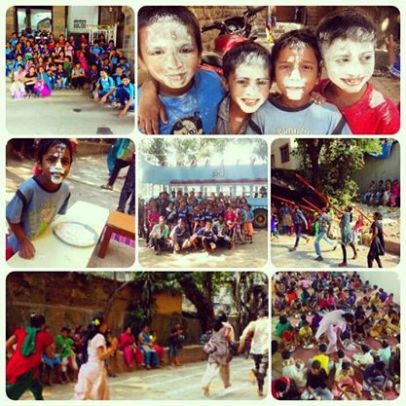We Need to Look Within
Child Protection & NGOs in India
by
Uma Subramanian
Case 1: “Our organization works on Women’s issues is there a need for a child protection policy?”
Case 2: “We have recreational centre for children. Our staff is experienced and trained in child rights, we don’t see the need to have a separate child protection policy.”
These are responses from NGOs who work with children (directly or indirectly). In most cases there is no system of child protection in an organization that does not directly work with children, it is not seen as an organizational goal. What is even more shocking is many organizations that work with children on a daily basis do not have a child protection policy.
This is one of the biggest deterrents to child protection in India today. We NGOs have been the watchdogs of child rights in the country, even before India ratified the United Nations Convention on the Rights of the Child (UNCRC) in 1992. We must lead by example.
Out of the estimated 2 million NGOs (Non Governmental Organizations) in India almost 30% work with children. Among these, education remains the biggest focus area over the last two decades. From there, many have advanced to other areas of child rights and NGOs are growing in numbers.
On issues ranging from child education to child participation; NGOs work relentlessly across cities and villages to ensure children get their due. On behalf of children, we demand accountability from almost everyone who comes in contact with a child – from parents to state departments.
Yet, many of us fail to look within to check whether WE are accountable and committed to child protection?
Do we closely look at our workforce, internal organizational policies and systems for child protection?
Do we guarantee all that is declared in the UNCRC to children who come in contact with our NGO?
The Child Protection Policy is a document that highlights organizational position on child protection and mechanisms to protect children. It is missing from the policies of many NGOs in India today. While some organizations have a well-drafted, perfect policy running into pages we often will see that, it is rarely understood or implemented by people who work on the ground.
Often we are so engrossed in our organizational goals that we pay little attention to a comprehensive child protection system. Yet, a child protection policy is as important as our trust deed or articles of association.
A child protection policy is mandatory for all organizations, which come in contact with children (directly or indirectly) irrespective of the nature of their work.
Just as we would have a gender policy and a sexual harassment committee, to protect individuals in an organization, we must have a child protection policy that protects the children who come in contact with our organization and the people who work with us.
Child Protection in Practice:
Child Protection should be deep-rooted in organizational culture; it has to be a crosscutting theme and an organizational habit for NGOs. Every person in our organization, a sweeper, an intern or the Director should understand it and make sure it gets implemented. We must set an example for others especially the State to follow.
Our child protection has to be understood and followed by children and others who come to our NGO. We often conduct sessions on legal awareness and rights for our children and staff. Our children know their rights as enshrined by the UNCRC and the Constitution of India. Can we also tell them about our organizational child protection policy?
Lead by example-
Write to us if you have a strong child protection policy –Aarambh will showcase it as a best practice in child protection!
Does your organization have a –
- Comprehensive Child Protection Policy (See links below)
- A Child Protection Officer – senior member of the organization
- Child Welfare Committees with children as representatives
- Suggestion boxes
- Background information and Police clearance certificates for staff, volunteers, visitors and interns
- Workshops with children and other groups on organizational policies including the Child Protection Policy
- A system to reinforce principles of child protection among team members on a regular basis
- A system to revisit and add new dimensions of child protection into your existing child protection policy
Sample Child Protection Policy:









Reblogged this on India UNPLUGGED and commented:
Are we accountable to the children whom we work with? Is there a need to look within our NGOs?
This months’ aarambh TALK features my take on Child Protection and NGOs in India!!
Dear Aarambh Team,
I work with a Govt. run observation home in Karnataka and would like to prepare a Child Protection Policy for the institution. I was going through the links of CPP which is displayed on your website, some of them are not working. Can you please help me to locate with some of them and also provide me with some essentials for preparing a CPP.
Thanks and Regards